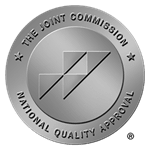Anhedonia: Explained

Anhedonia is the inability to experience pleasure from activities once enjoyed, and is a common byproduct of other mental health conditions, including depression and schizophrenia. It affects an estimated 70% of people with a major depressive disorder.
Because the root cause of anhedonia can vary, its symptoms and treatment can differ greatly from one person to the next.
Below, we’re outlining the most common symptoms, causes, and treatment options for anhedonia.
What is Anhedonia?
Anhedonia is a psychological condition characterized by a sense of apathy or indifference to experiences that one once found enjoyable. This can include everything from hobbies and social interactions to eating and sexual activities. Anhedonia is often associated with mental health disorders.
While depression and schizophrenia are the most common conditions associated with anhedonia, it can also occur in other conditions such as anxiety disorders and substance abuse.
Symptoms of Anhedonia
The most common symptoms of anhedonia include:
- Lack of interest in activities previously enjoyed
- Withdrawal from social activities and relationships
- Lessened ability to experience pleasure
- Difficulty finding motivation
- Feeling emotionally indifferent
- Changes in appetite
What Causes Anhedonia?
There are many potential causes of anhedonia, which can be linked to traumatic events, personality traits, and having a relative with a history of mental illness.
Other common causes of anhedonia include:
Mental Health Conditions
Depression, schizophrenia, and bipolar disorder are the most common conditions associated with anhedonia.
Substance Abuse
The chronic use of alcohol and drugs can lead to anhedonia over time.
Neurological Conditions
Certain disorders including Parkinson’s and Alzheimer’s diseases can reduce one’s ability to experience pleasure.
Chronic Stress
Prolonged stress can impact the brain’s reward system, which can lead to anhedonia.
Types of Anhedonia
Anhedonia can manifest in several forms, based on the cause and nature of the condition. The primary types of Anhedonia include:
Physical Anhedonia
Physical anhedonia affects one’s ability to experience pleasure from physical sensations, such as eating, touching, or sexual activities. People with physical anhedonia may not enjoy eating their once favorite foods, engaging in physical intimacy, or experiencing pleasurable physical sensations. This type of anhedonia is most commonly associated with depression and bipolar disorder.
Social Anhedonia
Social anhedonia impacts our ability to experience pleasure from social interactions and relationships. Individuals with social anhedonia may avoid social situations, feel indifferent towards others, and have difficulty forming or maintaining close relationships. This type of anhedonia is often associated with schizophrenia and other personality disorders.
How is Anhedonia Treated?
Since anhedonia is often a symptom of an underlying mental health condition, treatment will typically center around addressing the primary disorder.
The most common approaches to treating anhedonia include:
Medication
Antidepressants and other medications can help alleviate symptoms of anhedonia, especially if it’s linked to depression or other mental health disorders. These medications work by rebalancing the neurotransmitters in the brain that are responsible for regulating mood.
Lifestyle Changes
Engaging in regular physical activity, maintaining a healthy diet, getting enough sleep, and reducing stress can all help improve mood and alleviate symptoms of anhedonia. Stress management techniques such as meditation, yoga, and deep breathing exercises are also especially helpful in treating anhedonia and its root causes.
Professional Therapy
Psychotherapy, particularly cognitive behavioral therapy (CBT), can help identify negative thought patterns and develop coping strategies to change them. Other common forms of therapy include interpersonal therapy (IPT) or psychodynamic therapy, which may also be beneficial.
It’s important to remember that everyone’s experience with anhedonia is different, and what works for one person might not work for another. We recommend consulting with a mental health professional to determine the most appropriate treatment approach.
Does Anhedonia Go Away?
Anhedonia can often be managed and significantly reduced, but whether it can be fully “cured” depends on several factors, including its underlying causes and the individual’s response to treatment.
While some people may experience a complete resolution of anhedonia, others may find that it simply becomes more manageable over time with the right combination of treatments and lifestyle changes.
Treatment for Anhedonia in Orange County, California
Whether you’re suffering from symptoms of anhedonia or its underlying causes – including depression, schizophrenia, and bipolar disorder – Barn Life can help! Our licensed, clinical team and holistic treatment model helps people explore how to accept and embrace the inevitable hurdles, trauma, and pain that accompanies mental health conditions. In addition to our outpatient and partial hospitalization programs, we offer free community events, which are a great, low-key way to experience our holistic treatment facility.










